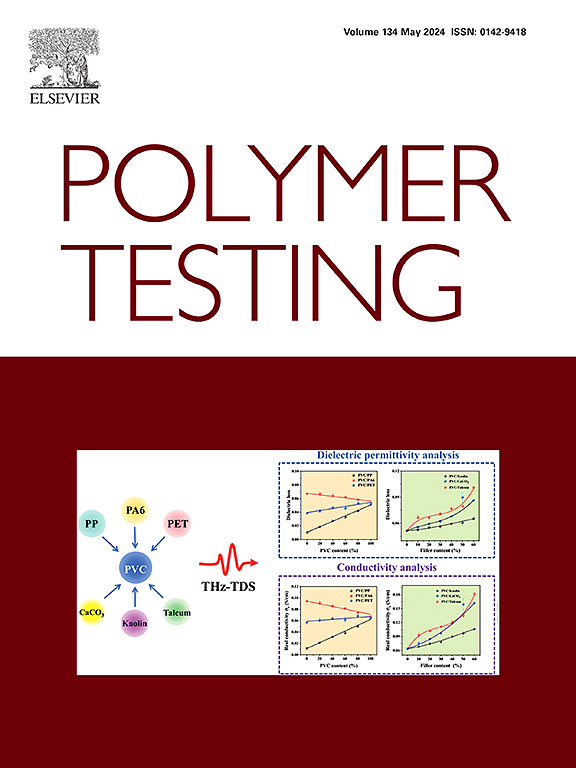Single-polymer composites based on polylactide continuous core-sheath bicomponent fibers
IF 5
2区 材料科学
Q1 MATERIALS SCIENCE, CHARACTERIZATION & TESTING
引用次数: 0
Abstract
Biopolymers offer a potential solution to the challenges posed by conventional plastics in terms of resource conservation and environmental protection. One area of application is the use of biopolymers in single polymer composite (SPC) materials. This paper describes the formation of a Polylactide (PLA) SPC using continuous bicomponent fibers which allows to realize a high fiber volume content (φ) of 75 %. The sheath of the fiber is made of amorphous PLA, while the core is made of semi-crystalline PLA. After consolidating the continuous bicomponent fiber into SPC, the amorphous PLA provides the matrix while the semi-crystalline PLA serves as reinforcement. The mechanical testing in fiber direction of the PLA-SPC resulted in a tensile strength of 107.5 ± 2.2 MPa and a Young's modulus of 9.7 ± 0.6 GPa. Differential scanning calorimetry (DSC) revealed two melting points for amorphous PLA (141.1 ± 0.2 °C) and semi-crystalline PLA (178.2 ± 0.9 °C). The SPC developed from PLA continuous bicomponent fibers shows a significantly higher Young's modulus compared to other PLA-SPC that is comparable to polyethylene terephthalate (PET) SPC.
求助全文
约1分钟内获得全文
求助全文
来源期刊

Polymer Testing
工程技术-材料科学:表征与测试
CiteScore
10.70
自引率
5.90%
发文量
328
审稿时长
44 days
期刊介绍:
Polymer Testing focuses on the testing, analysis and characterization of polymer materials, including both synthetic and natural or biobased polymers. Novel testing methods and the testing of novel polymeric materials in bulk, solution and dispersion is covered. In addition, we welcome the submission of the testing of polymeric materials for a wide range of applications and industrial products as well as nanoscale characterization.
The scope includes but is not limited to the following main topics:
Novel testing methods and Chemical analysis
• mechanical, thermal, electrical, chemical, imaging, spectroscopy, scattering and rheology
Physical properties and behaviour of novel polymer systems
• nanoscale properties, morphology, transport properties
Degradation and recycling of polymeric materials when combined with novel testing or characterization methods
• degradation, biodegradation, ageing and fire retardancy
Modelling and Simulation work will be only considered when it is linked to new or previously published experimental results.
 求助内容:
求助内容: 应助结果提醒方式:
应助结果提醒方式:


